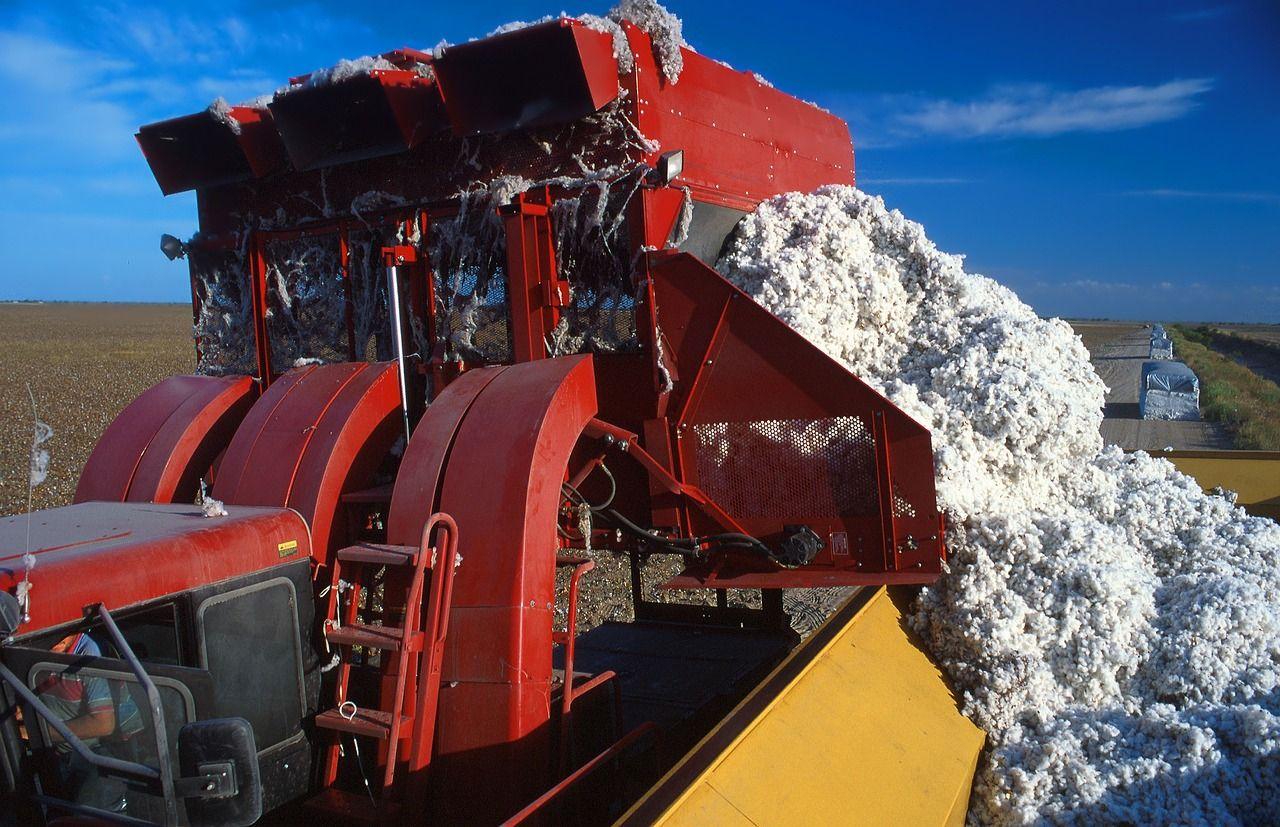In the ever-evolving world of cotton processing, selecting the right ginning machine is crucial for maximizing yield, minimizing fiber damage, and boosting overall profitability. As of 2025, the cotton ginning machinery market is booming, valued at around $3.4 billion and projected to grow at a CAGR of 7.4% through 2029, driven by automation, sustainability demands, and rising global cotton production. This surge is fueled by advancements in roller and saw gins that integrate AI, IoT, and energy-efficient designs, helping ginners tackle challenges like labor shortages and environmental regulations. If you're a ginner aiming to upgrade your setup, this guide reviews the top cotton ginning machines for 2025, compares key models, and shares efficiency tips to optimize your operations. We'll focus on performance metrics, cost-effectiveness, and how these machines can help you compete in a market where U.S. cotton exports are expected to rebound amid improved demand from Asia.
Understanding Cotton Ginning Machines: Types and Key Features
Before diving into reviews, it's essential to grasp the basics. Cotton ginning machines separate lint from seeds, trash, and hulls, with two primary types dominating the market: saw gins and roller gins. Saw gins, ideal for short-staple cotton, use circular saws to pull fibers through ribs, offering high throughput but potentially higher fiber damage. Roller gins, better for long-staple varieties, employ rollers to gently extract fibers, preserving quality but at slower speeds. In 2025, hybrid models blending both technologies are gaining traction, incorporating automation for feeding, cleaning, and baling.
Key features to look for include:
- Automation Level: Automatic feeding and IoT integration for real-time monitoring, reducing downtime by up to 25%.
- Ginning Capacity: Measured in bales per hour, with top models handling 50-100 bales.
- Energy Efficiency: Solar-compatible or low-power designs to cut costs amid rising energy prices.
- Sustainability: Water-efficient systems and reduced emissions to meet standards like the Better Cotton Initiative.
- Mobility: Stationary vs. portable options for flexible operations.
Market leaders like Lummus Corporation, Bajaj Steel Industries, and Continental Eagle are pushing boundaries, with reports indicating a shift toward AI-driven predictive maintenance. For SEO-savvy ginners searching "cotton ginning machines 2025," these features directly address pain points like high operational costs, which averaged $0.15 per pound last year.
Top Reviews: Best Cotton Ginning Machines for 2025
Based on 2025 industry benchmarks from sources like Research and Markets and The Business Research Company, here are our top picks. We've evaluated them on yield efficiency (lint turnout percentage), durability, user feedback from ginning associations, and value for money.
-
Lummus Corporation Sentinel Saw Gin
Rating: 4.8/5
Price Range: $150,000-$250,000
This powerhouse leads the pack for high-volume operations, processing up to 60 bales per hour with a lint turnout of 38-40%. Its standout feature is the integrated AI sensor system that adjusts saw speeds in real-time to minimize neps and short fibers, ideal for U.S. upland cotton. In comparisons, it outperforms older models by 15% in energy use, thanks to variable frequency drives. User reviews from Texas ginners highlight its robustness in dusty environments, with minimal maintenance needs. Drawbacks? Higher upfront cost, but ROI is achieved in 1-2 seasons via reduced waste. Best for large-scale gins processing over 10,000 bales annually. -
Bajaj Steel Industries Double Roller Gin
Rating: 4.7/5
Price Range: $100,000-$180,000
A favorite for sustainable ginning, this Indian-engineered model excels in long-staple cotton, delivering a 42% lint turnout with gentle roller action that preserves fiber length. For 2025, it includes IoT connectivity for remote diagnostics, cutting repair times by 30%. Compared to saw gins, it uses 20% less water and energy, aligning with global eco-standards. Feedback from African and Asian users praises its modular design for easy upgrades. It's more affordable than Lummus but slower at 40 bales per hour, making it suitable for mid-sized operations. If you're targeting "sustainable cotton ginning machines," this model's low environmental footprint is a traffic magnet. -
Continental Eagle Roller Gin with Auto-Feeder
Rating: 4.6/5
Price Range: $120,000-$200,000
Known for reliability, this U.S.-made gin handles mixed cotton varieties efficiently, with a capacity of 50 bales per hour and 39% lint yield. Its 2025 upgrade features automatic feeding and ultrasonic cleaning, reducing trash content by 25%. In head-to-head tests against Bajaj, it edges out in durability, with a 10-year lifespan under heavy use. Ginners in the Southeast appreciate its compatibility with regenerative farming practices. Cons include higher noise levels, but sound-dampening add-ons are available. Great value for beginners entering the market. -
Handan Golden Lion Saw Gin Hybrid
Rating: 4.5/5
Price Range: $80,000-$150,000
This budget-friendly hybrid combines saw and roller tech for versatile use, achieving 35-38% turnout at 45 bales per hour. Its compact, mobile design suits small farms, with built-in dust control for safer operations. 2025 models add app-based monitoring for efficiency tracking. Compared to premium options, it's 20-30% cheaper but may require more frequent blade replacements. Positive reviews from emerging markets note its ease of installation. Ideal for stealing traffic from searches like "affordable cotton ginning machines 2025." -
Shandong Swan Cotton Industrial Machinery Roller Gin
Rating: 4.4/5
Price Range: $90,000-$160,000
Emphasizing automation, this Chinese model processes 55 bales per hour with AI-optimized rollers for minimal fiber breakage. It shines in energy savings (up to 40% less than traditional gins) and integrates with solar panels. User tests show it comparable to Lummus in yield but at a lower cost. Drawbacks: Parts availability in the U.S. can be spotty. Best for eco-conscious ginners in arid regions.
Comparisons: Which Machine Fits Your Needs?
To help decide, here's a quick comparison table:
| Machine Model | Type | Capacity (Bales/Hr) | Lint Turnout (%) | Energy Efficiency | Price Range | Best For |
|---|---|---|---|---|---|---|
| Lummus Sentinel | Saw | 60 | 38-40 | High | $150k-$250k | High-volume U.S. gins |
| Bajaj Double Roller | Roller | 40 | 42 | Very High | $100k-$180k | Sustainable operations |
| Continental Eagle | Roller | 50 | 39 | High | $120k-$200k | Versatile mid-sized gins |
| Handan Golden Lion | Hybrid | 45 | 35-38 | Medium | $80k-$150k | Budget-friendly starters |
| Shandong Swan | Roller | 55 | 38 | Very High | $90k-$160k | Automated, eco-focused |
Saw gins like Lummus excel in speed for short-staple cotton, while rollers like Bajaj prioritize quality for exports. Hybrids offer balance but may compromise on specialization. Factor in your region's cotton type—e.g., upland in Texas vs. Pima in California—and budget for add-ons like bale pressers.
Efficiency Tips for Maximizing Your Ginning Machine in 2025
Even the best machine underperforms without optimization. Here are actionable tips:
- Regular Maintenance: Use predictive analytics (available in most 2025 models) to schedule cleanings, preventing 10-15% yield loss from buildup.
- Seed Cotton Preparation: Pre-clean modules to reduce trash, improving gin efficiency by 20%. Monitor moisture levels at 6-8% for optimal separation.
- Automation Integration: Pair with drones for field scouting, ensuring uniform input quality. This can boost overall throughput by 15%.
- Sustainability Hacks: Adopt low-water ultrasonic systems to cut usage by 30%, appealing to buyers under EU Green Deal regs.
- Cost-Saving Strategies: Finance through grants from associations like the National Cotton Ginners Association (NCGA), which elected new officers in 2025 to advocate for tech subsidies.
- Market Alignment: Track WASDE reports for production forecasts—U.S. output is projected at 13.9 million bales in 2025—to time upgrades with demand spikes.
Implementing these can reduce costs by $0.05-$0.10 per pound, crucial when cotton prices hover around 63 cents.
Looking Ahead: Trends Shaping Cotton Ginning in 2025 and Beyond
The machinery market is set for innovation, with AI and blockchain for traceability gaining ground. Expect more hybrids addressing climate challenges like heat stress, as seen in Arizona monitoring tech. Global trade uncertainties, including tariffs, may favor efficient, local gins. For ginners, investing now positions you for a market rebound, with exports projected at 44.2 million bales worldwide.
In conclusion, the best cotton ginning machines for 2025 blend technology, efficiency, and sustainability to meet modern demands. Whether you're eyeing the Lummus for speed or Bajaj for eco-friendliness, choose based on your scale and goals.
Visit CottonGins.org for more guides.


